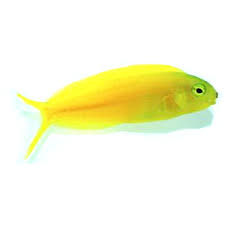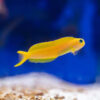The Symbolism of the Dragon in Chinese Rituals for Honor and Blessings

The dragon has long been one of the most powerful symbols in Chinese culture, representing a range of qualities from strength and power to protection and prosperity. The importance of the dragon in Chinese society extends beyond mythological tales and artistic representations; it is intricately woven into various cultural and spiritual practices, including rituals of veneration and prayers for blessings. From ancient times to modern-day ceremonies, the dragon has played a central role in rituals designed to honor ancestors, seek divine favor, and ensure the well-being of individuals and communities. In this article, we will explore the symbolism of the dragon in Chinese rituals, focusing on its role in ceremonies of honor and blessings.
The Dragon in Chinese Culture: A Powerful and Benevolent Symbol
In traditional Chinese culture, the dragon is not just a creature of myth but a deeply ingrained symbol of power, auspiciousness, and divine authority. Unlike the fearsome, malevolent dragons of Western mythology, the Chinese dragon is a benevolent being, often associated with water, rain, fertility, and the imperial throne. It represents the harmonious interaction between humanity and the natural world, as well as the spiritual realm.
The dragon’s positive associations with rain, agricultural prosperity, and good fortune make it a figure central to Chinese rituals that seek to ensure these blessings. As a symbol of imperial authority, the dragon was often depicted as the guardian of the emperor, embodying his divine right to rule over the land. The emperor’s robes and the imperial throne were often adorned with dragon motifs, emphasizing the connection between the ruler’s power and the cosmic forces represented by the dragon.
However, the dragon is not reserved solely for the imperial court. It is a widely accessible symbol that resonates deeply with all levels of Chinese society. The dragon’s ability to bring prosperity and protect from evil made it a figure invoked in various rituals performed by families, communities, and religious practitioners. Over time, these dragon-centered rituals became an essential aspect of Chinese spiritual and cultural life, especially in ceremonies meant to honor ancestors, celebrate the seasons, and pray for peace and well-being.
Dragon Symbolism in Rituals of Honor
One of the primary uses of the dragon symbol in Chinese rituals is in ceremonies of honor. These rituals often involve veneration of ancestors, deities, and celestial beings, with the dragon playing a central role in expressing respect, reverence, and gratitude. The dragon’s role as a protector and a mediator between the human and divine realms makes it a fitting symbol in these rituals.
Ancestor Worship and the Role of the Dragon
In Chinese culture, ancestor worship is a significant practice that honors the spirits of deceased family members and seeks their blessings for the living. During important festivals like the Qingming Festival (Tomb Sweeping Day), families gather at ancestral graves to clean tombstones, make offerings, and perform rituals that honor their ancestors. The presence of the dragon in these rituals underscores the deep connection between the living and the spirits of the departed. Ancestors are believed to hold great power and influence over the lives of their descendants, and by invoking the dragon, people seek to ensure that these spirits are honored and revered.
At ancestral altars, images of the dragon are often displayed alongside offerings of food, incense, and other symbolic items. The dragon, in this context, serves as a conduit between the human world and the realm of spirits, facilitating communication and ensuring that the ancestral blessings are received. In some regions, dragon-shaped incense holders or dragon carvings are used during the ritual to further invoke the dragon’s protective powers and blessings.
In addition to ancestor worship, the dragon is also invoked in rituals honoring deities associated with various aspects of life, such as wealth, health, and fertility. In these ceremonies, the dragon’s ability to mediate between the earthly and celestial realms is recognized, and its presence is believed to bring favor from the gods.
The Dragon in Imperial and State Rituals
Historically, the Chinese emperor was seen as the earthly representative of the dragon, holding a divine mandate to rule. As a result, dragon symbolism was prominently featured in state rituals, particularly during ceremonies designed to honor the emperor and affirm his authority. These rituals were often grand and elaborate, reflecting the emperor’s elevated status as the “Son of Heaven” (天子), and the dragon served as a symbol of his direct connection to the celestial realm.
One of the most significant state rituals involving the dragon was the annual “Rain Blessing Ceremony” (祈雨仪式), where the emperor would offer prayers to the dragon to ensure a good harvest. During this ceremony, the emperor would ride in a procession to a specially constructed temple, where offerings were made to the dragon deity to invoke rain and fertility for the land. The emperor’s participation in this ritual, which was often accompanied by dragon dances and music, symbolized his role as the protector and provider of the people.
The use of the dragon in imperial rituals also extended to coronations, weddings, and other important state events. The emperor’s robes were often adorned with dragons, and the dragon motif was used in the design of imperial seals, thrones, and other royal regalia. In these rituals, the dragon not only symbolized the emperor’s power but also conveyed the divine legitimacy of his rule.
Dragon Symbolism in Rituals for Blessings and Well-Being
In addition to its role in honoring ancestors and deities, the dragon plays a key role in rituals that seek blessings for individuals and communities. These rituals are focused on invoking the dragon’s protective power to ensure peace, health, prosperity, and good fortune. They are commonly performed during important festivals, such as the Lunar New Year, Dragon Boat Festival, and other seasonal celebrations.
The Dragon Boat Festival and Prayers for Protection
The Dragon Boat Festival, celebrated on the fifth day of the fifth lunar month, is one of the most well-known occasions where the dragon plays a central role. This festival, originally a celebration to honor the poet Qu Yuan, is now celebrated with dragon boat races, feasting, and other cultural activities. The dragon boat itself is an important ritual object, as it is shaped like a dragon, and the races symbolize the people’s collective wish for good fortune and protection.
During the Dragon Boat Festival, the dragon is seen as a guardian figure, protecting the participants from harm and ensuring a successful and safe journey. The dragon boat races are accompanied by dragon dances and the singing of songs that invoke the spirit of the dragon, calling upon it to bless the participants with strength and success. The ritualized movements of the dragon boats as they glide across the water are meant to mirror the dragon’s graceful and powerful flight, bringing harmony between humans and nature.
Another key aspect of the Dragon Boat Festival is the consumption of zongzi (sticky rice dumplings), which are traditionally offered to the dragon. The act of eating zongzi is believed to symbolize the desire for good health and protection from evil spirits. The dragon, as a powerful and benevolent figure, is believed to bless those who partake in the festival with long life and prosperity.
The Dragon in Lunar New Year Celebrations
The Lunar New Year, also known as the Spring Festival, is the most important traditional holiday in China. During the celebrations, the dragon takes center stage in various rituals aimed at bringing good fortune, health, and happiness for the coming year. One of the most popular traditions is the dragon dance, where a team of dancers perform with a large dragon puppet, weaving and undulating to the beat of drums, cymbals, and gongs. The dragon dance is believed to drive away evil spirits and bring good luck to the community.
In addition to the dragon dance, other rituals involving the dragon are common during the Lunar New Year. People decorate their homes with dragon imagery, hang red lanterns, and burn incense to invite the dragon’s protection. Families often pray for prosperity, good health, and success in the coming year, and the dragon is invoked as the guarantor of these blessings.
The Dragon in Buddhist and Daoist Rituals
Beyond folk and imperial traditions, the dragon also plays a prominent role in Chinese religious practices, particularly in Buddhism and Daoism. In these spiritual systems, the dragon is often seen as a symbolic representation of divine power and enlightenment.
In Buddhist temples, dragons are commonly depicted in sculptures and paintings, symbolizing the presence of the divine and the protection of the faithful. In Daoism, the dragon is closely associated with the element of water and the flow of Qi (energy). Rituals performed by Daoist priests often involve invoking the dragon’s power to purify the body and mind, heal illnesses, and restore balance.
Conclusion
The dragon is a powerful symbol in Chinese culture, deeply embedded in rituals that honor ancestors, seek blessings, and celebrate important events. Whether in the grand ceremonies of the imperial court or the intimate family rites of ancestor worship, the dragon represents divine power, protection, and prosperity. Its presence in rituals for honor and blessings reflects the Chinese people’s enduring belief in the connection between the human and spiritual realms, and their reliance on the dragon’s strength and benevolence to ensure the well-being of their communities. From the Dragon Boat Festival to the Lunar New Year, the dragon continues to play a vital role in shaping the cultural and spiritual life of the Chinese people.


